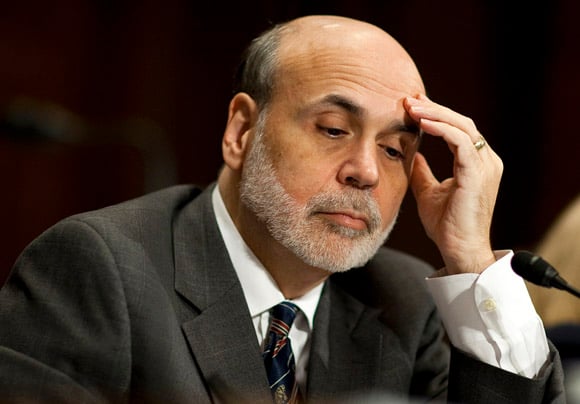Treasuries were headed for their steepest quarterly decline since the last three months of 2010 while corporate bonds surged as the world's largest economy showed signs of improvement.
U.S. government securities lost 1 percent since Dec. 31 as of yesterday, according to Bank of America Merrill Lynch indexes. An index of investment-grade and high-yield corporate bonds returned 3.2 percent, the most since July to September 2010. Treasuries also lagged behind German and Japanese debt during the first quarter.
“It will be difficult for rates to sell off in a sustained fashion any time soon unless we get much higher and sustained growth rates, and by that I mean 3 percent and above,” Michael Pond, co-head of interest-rate strategy in New York at Barclays Plc, one of 21 primary dealers that trade directly with the Federal Reserve.
Benchmark 10-year note yields slipped one basis point, or 0.01 percentage point, to 2.15 percent at 11:12 a.m. New York time, according to Bloomberg Bond Trader prices. The 2 percent securities maturing in February 2022 rose 3/32, or 94 cents per $1,000 face amount, to 98 22/32.
The yields have climbed 27 basis points this quarter, the most in more than a year. They reached 2.40 percent on March 20, the highest level since Oct. 28, after touching a record low 1.67 percent in September. The average over the past decade is 3.86 percent.
Real Yield
The increase in yields this year has brought them closer to the annual rate of inflation. Ten-year notes have a so-called real yield of minus 72 basis points, compared with minus 152 basis points at the end of 2011.
Ten-year yields will increase to 2.53 percent by year-end, according to the average forecast in a Bloomberg News survey of financial companies, with the most recent projections given the heaviest weightings.
Consumer spending in the U.S. rose in February by the most in seven months, with purchases climbing 0.8 percent, Commerce Department figures showed today. The median estimate of economists surveyed by Bloomberg News called for a 0.6 percent increase. Incomes advanced less than projected, sending the saving rate down to the lowest level in more than two years.
Business activity in the U.S. held near a 10-month high in March, the Institute for Supply Management-Chicago Inc.'s gauge showed. The barometer declined to 62.2 from 64 in February, which was the highest since April 2011. Readings greater than 50 signal growth.
“The U.S. has got some legs, at least for the next couple of quarters,” Jim O'Neill, chairman of Goldman Sachs Asset Management, said in an interview on Bloomberg Television in Italy before the report. “There remain all sorts of issues, but I think the U.S. is going to continue to positively surprise.”
RELATED ITEM 10 tax tips every boomer should know »
The Fed bought $2.09 billion of Treasuries today maturing from February 2036 to August 2041 as part of a program to replace $400 billion of shorter-term debt in its holdings with longer maturities to hold down borrowing costs.
The central bank purchased $2.3 trillion of debt under two rounds of quantitative easing from December 2008 to June 2011.
Philadelphia Fed President Charles Plosser said the central bank may need to raise interest rates before late 2014 and additional stimulus isn't necessary as the U.S. economy shows signs of strength.
“We should not anticipate additional accommodation,” Plosser said yesterday in Wilmington, Delaware. “In the absence of some shock that derails the recovery, we may well need to raise rates before the end of 2014.”
RELATED ITEM Top nine alts strategies used by advisers »
The Fed has said economic conditions will probably warrant keeping its benchmark rate at almost zero until at least late 2014. It has kept its target for overnight lending between banks in a range of zero to 0.25 percent since December 2008.
Treasuries rose yesterday as investors sought the safest assets on speculation Europe's debt crisis will worsen again. Greece will probably have to restructure its debt for a second time, Moritz Kraemer, head of sovereign ratings at Standard & Poor's, said March 28.
European governments capped fresh rescue lending at 500 billion euros ($666 billion), after a Germany-led coalition opposed a further expansion of the region's anti-debt-crisis firewall.
Adding the 300 billion euros already committed to Greece, Ireland and Portugal, euro-area finance ministers put the overall size of the firewall at 800 billion euros. In a statement, they ruled out using the 240 billion euros left in the temporary rescue fund to go beyond that.
Europe is counting on the sums pledged so far, plus a 1 trillion-euro cash infusion by the European Central Bank into the financial system, to persuade the rest of the world it's doing enough to keep its two-year-old debt crisis at bay.
--Bloomberg News--







